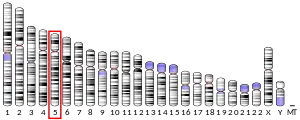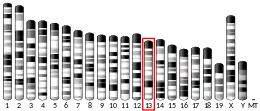| SLC12A7 | |||||||||||||||||||||||||||||||||||||||||||||||||||
|---|---|---|---|---|---|---|---|---|---|---|---|---|---|---|---|---|---|---|---|---|---|---|---|---|---|---|---|---|---|---|---|---|---|---|---|---|---|---|---|---|---|---|---|---|---|---|---|---|---|---|---|
| Identifiers | |||||||||||||||||||||||||||||||||||||||||||||||||||
| Aliases | SLC12A7, KCC4, solute carrier family 12 member 7 | ||||||||||||||||||||||||||||||||||||||||||||||||||
| External IDs | OMIM: 604879 MGI: 1342283 HomoloGene: 21312 GeneCards: SLC12A7 | ||||||||||||||||||||||||||||||||||||||||||||||||||
| |||||||||||||||||||||||||||||||||||||||||||||||||||
| |||||||||||||||||||||||||||||||||||||||||||||||||||
| |||||||||||||||||||||||||||||||||||||||||||||||||||
| |||||||||||||||||||||||||||||||||||||||||||||||||||
| |||||||||||||||||||||||||||||||||||||||||||||||||||
| Wikidata | |||||||||||||||||||||||||||||||||||||||||||||||||||
| |||||||||||||||||||||||||||||||||||||||||||||||||||
Solute carrier family 12 member 7 is a protein that in humans is encoded by the SLC12A7 gene.[5][6]
See also
References
- 1 2 3 ENSG00000113504 GRCh38: Ensembl release 89: ENSG00000276482, ENSG00000113504 - Ensembl, May 2017
- 1 2 3 GRCm38: Ensembl release 89: ENSMUSG00000017756 - Ensembl, May 2017
- ↑ "Human PubMed Reference:". National Center for Biotechnology Information, U.S. National Library of Medicine.
- ↑ "Mouse PubMed Reference:". National Center for Biotechnology Information, U.S. National Library of Medicine.
- ↑ Mount DB, Mercado A, Song L, Xu J, George AL, Delpire E, Gamba G (June 1999). "Cloning and characterization of KCC3 and KCC4, new members of the cation-chloride cotransporter gene family". The Journal of Biological Chemistry. 274 (23): 16355–62. doi:10.1074/jbc.274.23.16355. PMID 10347194.
- ↑ "Entrez Gene: SLC12A7 solute carrier family 12 (potassium/chloride transporters), member 7".
Further reading
- Mercado A, Song L, Vazquez N, Mount DB, Gamba G (September 2000). "Functional comparison of the K+-Cl- cotransporters KCC1 and KCC4". The Journal of Biological Chemistry. 275 (39): 30326–34. doi:10.1074/jbc.M003112200. PMID 10913127.
- Hattori A, Okumura K, Nagase T, Kikuno R, Hirosawa M, Ohara O (December 2000). "Characterization of long cDNA clones from human adult spleen". DNA Research. 7 (6): 357–66. doi:10.1093/dnares/7.6.357. PMID 11214971.
- Boettger T, Hübner CA, Maier H, Rust MB, Beck FX, Jentsch TJ (April 2002). "Deafness and renal tubular acidosis in mice lacking the K-Cl co-transporter Kcc4". Nature. 416 (6883): 874–8. Bibcode:2002Natur.416..874B. doi:10.1038/416874a. PMID 11976689. S2CID 4389928.
- Bräuer M, Frei E, Claes L, Grissmer S, Jäger H (July 2003). "Influence of K-Cl cotransporter activity on activation of volume-sensitive Cl- channels in human osteoblasts". American Journal of Physiology. Cell Physiology. 285 (1): C22-30. doi:10.1152/ajpcell.00289.2002. PMID 12637262.
- Karadsheh MF, Byun N, Mount DB, Delpire E (2004). "Localization of the KCC4 potassium-chloride cotransporter in the nervous system". Neuroscience. 123 (2): 381–91. doi:10.1016/j.neuroscience.2003.10.004. PMID 14698746. S2CID 41970238.
- Shen MR, Lin AC, Hsu YM, Chang TJ, Tang MJ, Alper SL, Ellory JC, Chou CY (September 2004). "Insulin-like growth factor 1 stimulates KCl cotransport, which is necessary for invasion and proliferation of cervical cancer and ovarian cancer cells". The Journal of Biological Chemistry. 279 (38): 40017–25. doi:10.1074/jbc.M406706200. PMID 15262997.
- Hsu YM, Chou CY, Chen HH, Lee WY, Chen YF, Lin PW, Alper SL, Ellory JC, Shen MR (March 2007). "IGF-1 upregulates electroneutral K-Cl cotransporter KCC3 and KCC4 which are differentially required for breast cancer cell proliferation and invasiveness". Journal of Cellular Physiology. 210 (3): 626–36. doi:10.1002/jcp.20859. PMID 17133354. S2CID 21615465.
This article is issued from Wikipedia. The text is licensed under Creative Commons - Attribution - Sharealike. Additional terms may apply for the media files.




